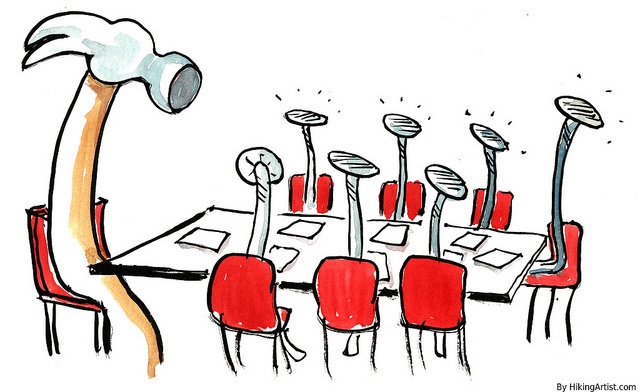Share article
Replace your “hammer” with smart tools to grow your business
You know the old saying, “When all you have is a hammer, you approach every problem as if it were a nail.” And wow, are we ever seeing a lot of hammer swinging and nail pounding in the world of benefits!
Whether you are a benefits-only agency or a multi-lines agency with a benefits practice, it’s time to step back and redefine your problem.
When a hammer is sufficient
In the past, the hammer and nail approach worked pretty well in building a benefits practice. Our toolbox was simple: we had a framing hammer and a finish hammer. We used those hammers to drive the nails of product, price and service.
Over time we started collecting additional tools that have the potential to help us build a more complete solution for our clients. You will recognize these tools as the “value-added services” in which you have made a big investment, but which largely collect dust in the corner of the workshop.
So why is it that the benefits world has collected all of these tools, yet continues to rely solely on a hammer? The answer is simple. Until now, that single tool was more than sufficient. If we swung the hammer hard enough and frequently enough (e.g., throw enough activity against the wall and something will stick), we were able to build our practice.
But today that’s not working like it once did, is it? Einstein told us that the definition of insanity is “doing the same thing over and over and expecting different results.” Most benefits agencies and producers, however, aren’t necessarily looking for different results; they’re just trying to figure out how to keep the results they’ve always achieved. So they’re swinging the hammer harder than ever and hoping for the same results. They’re exhausted and frustrated, and rightly so.
Another definition of insanity we hear today is “doing the same thing over and over and expecting the same results.”
I have bad news: the hammer-swinging days of building a benefits practice are over. If you insist on continuing to work with only a hammer, all you will do is eventually tear down what you have already built.
You step back, look at your hammer and ask: “What’s wrong with this thing?” And you likely define the problem in one of the following ways:
- It’s the government and the ACA. You are getting cut out, and your remaining job is more difficult than ever.
- It’s the carriers. They keep reducing your commission schedule, and maybe some don’t even allow you to sell for them anymore.
- It’s your clients. They are more demanding than ever before and are also listening to your competitors more than ever before.
- It’s the providers of your “valueadded services.” You’ve made a huge investment but aren’t getting any meaningful ROI.
None of these is your real problem; they are merely symptoms of the real problem.
The real problem is that too many benefits agencies and producers still believe they can build something special with nothing more than a hammer. Unfortunately, the “hammer the nail harder and more frequently” approach is no longer enough to overcome the symptoms described above.
Redefine your role
Quit trying to figure out how to deal with the symptoms. Instead, redefine how you deliver value to your clients, and these symptoms will largely go away. It’s time to recognize that in order to build something special for your clients, you have to become a “design-build firm” rather than a “hammer specialist.”
Decide that your job is to help your clients design what they truly want to accomplish through their HR/benefits investment. Have conversations with your prospects and clients about what it means for them to be an “employer of choice.” If you raise their expectations of what kind of plan a broker should build, they will no longer be interested in a competitor who carries nothing more than a hammer in his tool belt.
Decide that your job is to help identify what needs to be renovated or built as part of the final structure. You need to understand broader HR issues (employee engagement, communication, attraction/ retention, etc.) in order to properly analyze the situation. When you do this, you start to become an advisor instead of just a vendor.
Decide that your job is to find the resources and materials required for the construction. Just as the insurance solution comes from an outside source, you need to partner with reliable sources for the other solutions and issues identified above. Here is where you will start to get a real ROI on that “value-added services” investment.
Decide that your job is to oversee the construction and ensure that the client or prospect finds that something special he or she wanted. Don’t limit yourself to just the solutions you can do yourself. Again, you have always “outsourced” the insurance solution to the carriers; you can do the same thing with other solutions. You bring value by overseeing the bigger project—think of yourself as the general contractor of the benefits plan—and you are no longer controlled by the ACA and insurance carriers.
The problem, as we tend to see it, isn’t the problem. The real problem is in how we see the problem. When you change the way you look at the problem, the problem you are looking at starts to change.
As gut-wrenching as it is to realize that the way we work is the real problem, it should be empowering to know that you are in control of the solution.
It’s up to you. You can continue to complain about the symptoms and live in fear of your future, or you can take responsibility, embrace your new role, and become the feared competitor in your market.
A version of this article originally appeared in Rough Notes.
Photo by hakinmhan
